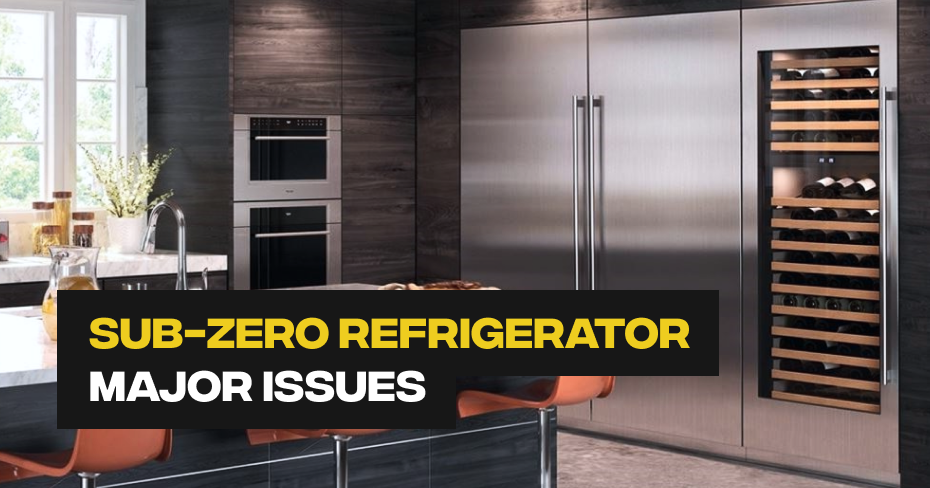
Sub-Zero Refrigerator Ice Maker Problems
Sub-Zero Refrigerators are renowned for their top-tier quality and innovative features, but even these high-end appliances can encounter issues from time to time. In this blog, we’ll explore common problems associated with Sub-Zero Refrigerator ice makers and provide solutions to keep your ice supply abundant and refreshing.
Ice Maker Not Producing Ice
- Check the water filter. If it’s been a while since you changed the filter, the mesh may have become clogged with mineral deposits, blocking water flow through the unit. For best results, Sub-Zero recommends changing the water filter every 6-12 months, depending on usage. Do make sure you’re buying certified Sub-Zero water filters—there are many counterfeit refrigerator water filters online, and not only do they perform less well, some are even made of toxic materials.
- Check that the ice bucket is correctly placed. If you’ve removed the ice bucket, be sure it was replaced correctly. The ice maker only switches on when there is contact between the bucket and the electronic switches at the back of the fridge.
- Check that the ice level arm is in the down position. The arm is white, wide and flat and is situated above the ice bucket when the freezer is closed (note: freezer trays are removable for easier access). If it’s up, shut off the freezer and gently push the arm down. If it won’t budge, don’t force it, as you may break it. Once down, restart the unit. If the arm has become disconnected, it may have to be reinstalled or replaced if broken (in which case, call us, we sell replacement parts and can also handle the repair for you).
- Check whether the fill tube is frozen. If the arm is down, next check the fill tube. The fill tube is a thin tube located above the ice maker, coming from either the back or side wall. Low water pressure can allow the water in the fill tube to freeze, preventing flow to the ice maker. If it feels especially stiff, turn off the unit and use a hair dryer on low speed to melt the obstruction. When using a hair dryer, be sure to move the dryer back and forth to avoid melting the plastic piping.
- Check that ice isn’t obstructing the exit from ice maker. Sometimes ice cubes will stick together if the freezer door has been opened repeatedly in a warm kitchen, obstructing the ice’s exit from the ice maker. Grab that hair dryer again, and set it on low, and pass the warm air over the clumped ice until the pieces separate easily. After freeing obstructions, turn the unit off and then on again to reset. To prevent ice buildup like this in the future, we recommend emptying the ice bin monthly.
- Check the water supply lines. Water supply may be obstructed by a kink in the water line, readjusting the line to remove the kink may solve the problem. There may also be an inadvertent separation of the water line connection. (The latter will probably be signaled by a water leak on the kitchen floor.)
Slow Ice Production
If you’ve noticed a decrease in ice production from your Sub-Zero refrigerator’s ice maker, several factors could be at play. Ensure that the water supply to the refrigerator is connected and providing sufficient water pressure. Low water pressure can slow down ice production. Check if your refrigerator’s water filter is due for replacement. A clogged or outdated filter can impede water flow, affecting ice production.
Small or Misshapen Ice Cubes
Ice cubes that are smaller than usual or misshapen can be indicative of a problem. The water inlet valve may be malfunctioning, causing it to release insufficient water to fill the ice mold completely. A faulty valve can result in smaller or deformed ice cubes.
Cloudy or Odd-Tasting Ice
If your Sub-Zero refrigerator is producing cloudy or ice cubes with an unusual taste, consider the following solutions. Poor water quality can lead to cloudy or strange-tasting ice. Ensure that your water source is clean and free from contaminants. You may want to invest in a water filtration system if needed. Additionally, regularly clean the ice maker and the ice bin to prevent the buildup of impurities and residue that can affect ice quality.